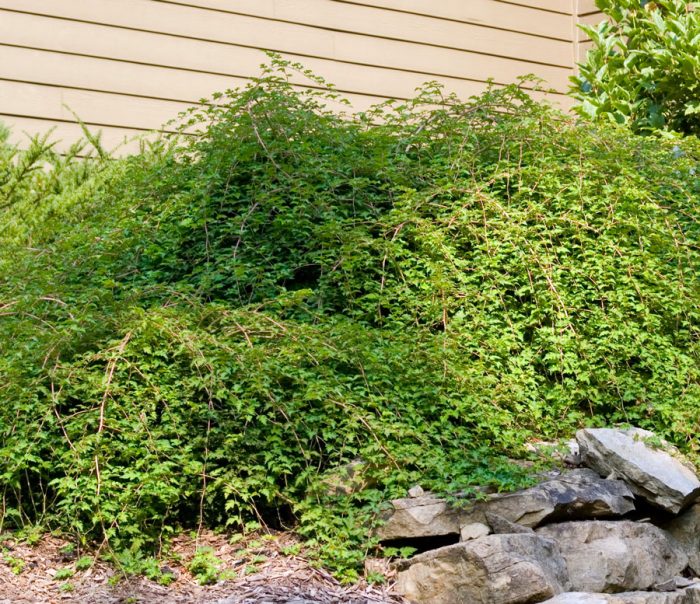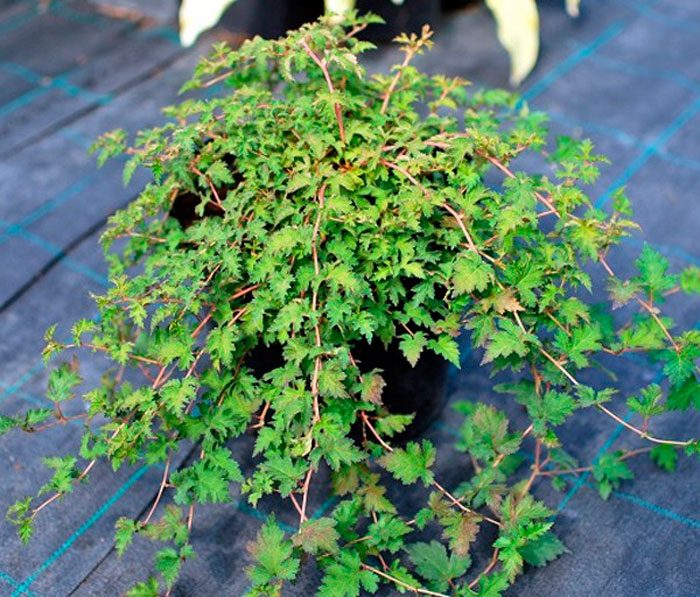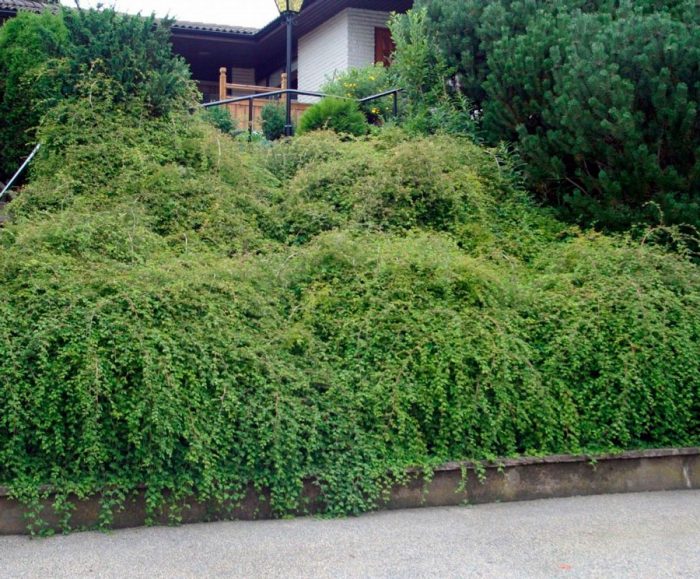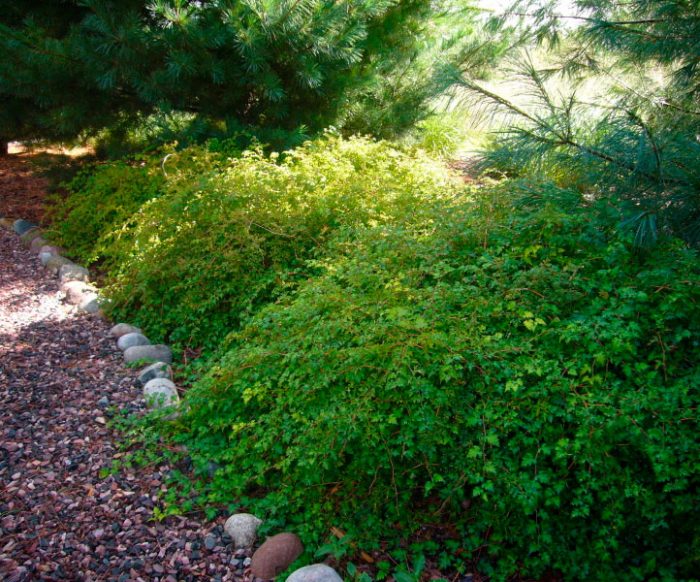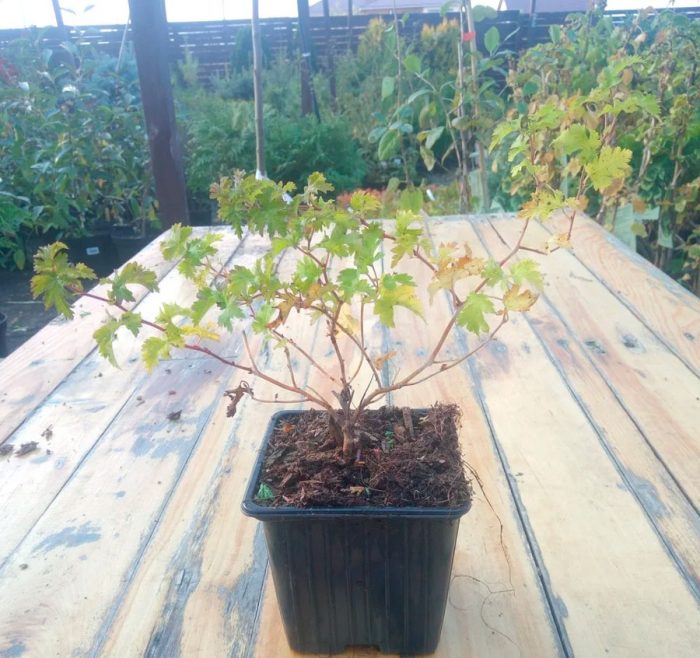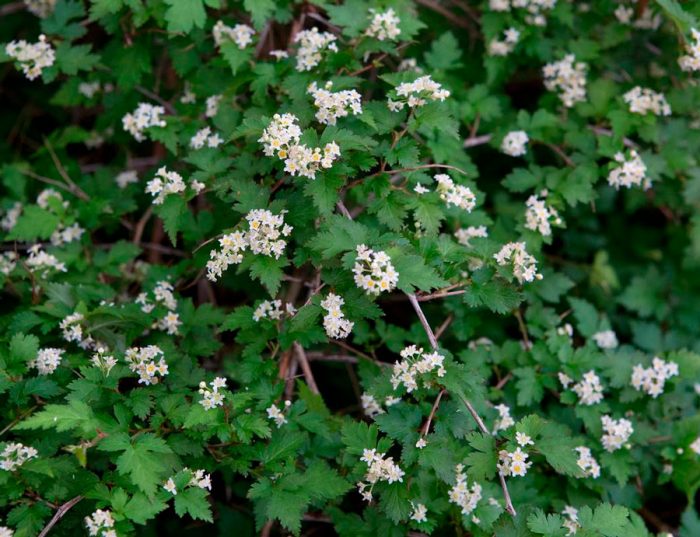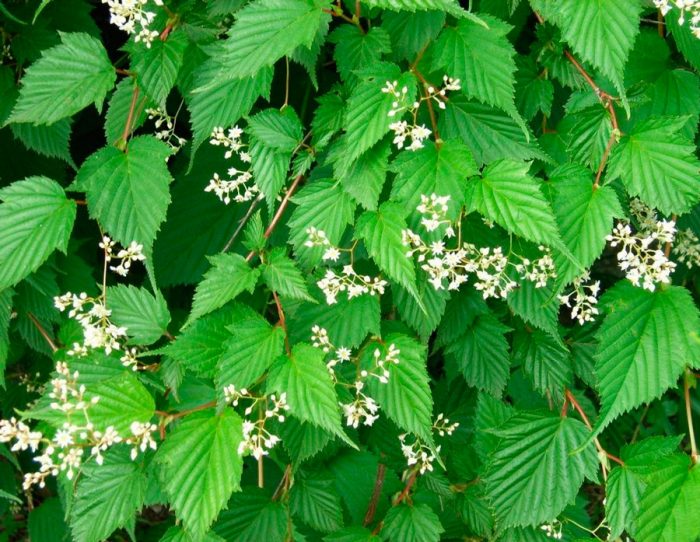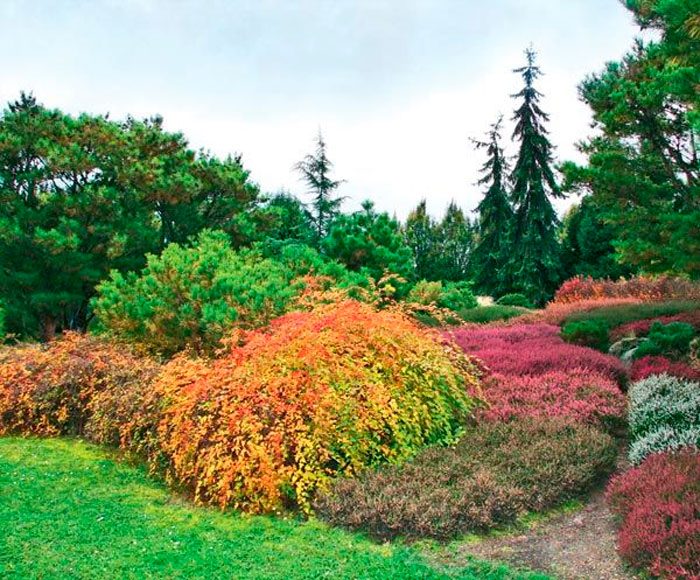Today, the ornamental shrub Stephanandra is becoming more and more popular with gardeners of middle latitudes every year. This plant comes from East Asia, or rather, from the territory of Korea and Japan. This deciduous perennial plant has a wide crown, curly shoots and spectacular leaves of a rich color. The stamens of the Stefanandra flowers are arranged in a circle, thanks to which such a plant is also called the "male wreath".
Content
Features of Stephanandra
The Stefanandra plant is part of the Rosaceae family. The height of this shrub varies from 200 to 300 cm, while its crown reaches 200–250 cm in diameter. Over time, under their own weight, the branches bend and acquire an arched shape, making the plant look even more impressive. The edge of the ovoid leaf plates has notches. In summer, the color of the foliage is greenish or green, and in autumn it changes to orange or yellow.
During flowering, small white flowers open on the dwarf shrub, their smell is very weak. To make Stephanandra look the most effective, it should be planted with conifers.
Planting Stephanandra in open ground
Site selection
Stefanandra grows best in well-lit areas. If the bush is planted in the shade or even in a little shade, then its already slow growth will slow down even more, but it will not die. It should also be borne in mind that if the shrub grows in shade, then it may not bloom.
Loose, light soil of neutral acidity is the best option for growing Stefanandra. For planting it, you can choose areas with light peaty-sandy, as well as clayey or loamy soil. However, pay attention to the fact that excessively dense and heavy soil must be loosened before planting a bush. To do this, it is dug up with the introduction of peat and sand.
When choosing a site, pay attention to the fact that this culture reacts extremely negatively to draft and cold wind. In this regard, an open area blown from all sides is not suitable for planting it.
Landing
Dig the planting hole and do not forget to make a good drainage layer at the bottom of it, using small pieces of broken brick, small stones or rubble for this. If you are going to plant an adult seedling, then the dimensions of the hole prepared for planting should be 0.6x0.6 meters. After the drainage layer has been poured, it is covered with a ten-centimeter layer of sand.
Prepare the soil in advance for planting. To do this, combine the garden soil with peat and sand, it is also recommended to add some organic matter, for example, humus or compost. Place a seedling in the prepared hole and fill all the voids with the prepared soil mixture. Slightly compact the surface and do not forget to water the bush abundantly.
Stefanandra's care
Watering
Stefanandra, grown outdoors, needs regular watering. It is carried out 2 or 3 times every 7 days. However, during prolonged drought on hot days, the plant should be watered 1 or even 2 times a day. Experts advise to water the bush immediately after the soil surface dries up.
Remember that excessive drought, like waterlogging, can negatively affect the condition of the shrub. If the bush is not watered in a timely manner, then it will begin to fade very quickly, and its shoots will go down. But do not overdo it with watering, since if liquid stagnates regularly in the root system, then rot may form on it.
Rain or well-settled water is best suited for irrigation. During prolonged drought, the shrub responds well to crown moistening from a spray bottle. However, a similar procedure should be carried out in the early morning or at sunset. Do not spray the bush during the day, as this can cause sunburn on its foliage.
Weeding and loosening
It is recommended to regularly loosen the soil around the bush. During this procedure, all weeds are also removed. Regular weeding is extremely important for a young bush that has not yet matured.
In order to reduce the number of watering and weeding, the surface of the trunk circle must be covered with a layer of mulch. Mulching is especially important for those bushes that grow in a well-lit area. Thanks to this, it will be possible to avoid overdrying the soil.
Pruning
Sanitary pruning is done in springtime. To do this, cut out all excess, disease-damaged, injured and dried shoots. At the same time, formative pruning is carried out. Be sure to cut out all branches that contribute to the thickening of the crown, otherwise the bush will look unkempt. Also, in an overly thickened bush, the sun's rays cannot get into its middle. Because of this, part of the foliage is observed to fall, which reduces the decorative effect of the plant.
Top dressing
In order for Stephanandra to bloom profusely and have a dense crown, in the springtime it must be fed with nitrogen-containing fertilizers. Also, during the growing season, it is fed with organic matter several times. To do this, you can use an infusion of chicken manure or herbs. To make an infusion, you need to adhere to the following plan:
- take a container of a suitable size and put chicken droppings in it, which is filled with water in a ratio of 1:10;
- the mixture should stand for about a week and a half;
- mix the finished infusion well and pour it over the bush, and only a little liquid fertilizer is poured under one bush.
Also, humus can be used to feed this culture. Pour 1 bucket of humus under the bush. Then, gently mix it with the topsoil in the tree trunk circle.
In the fall, to feed this plant, special fertilizers are used, intended for this time of year. These can be purchased at the flower shop.
Diseases and pests
Stefanandra is highly resistant to both pests and diseases.However, experienced gardeners recommend systematically carrying out preventive treatment of the shrub with a solution of a fungicidal drug, which will help protect the bush from powdery mildew, gray rot and rust.
Wintering
The plant is distinguished by a relatively high frost resistance and is able to withstand a drop in air temperature to minus 25 degrees. However, if the frost is more severe, then this can cause the death of the bush.
In late autumn, tilt the shrub branches to the soil surface and cover them with dry branches, soil, foliage or spruce branches. This will help protect the plant from freezing. With the onset of spring, remove all shelters from the bush.
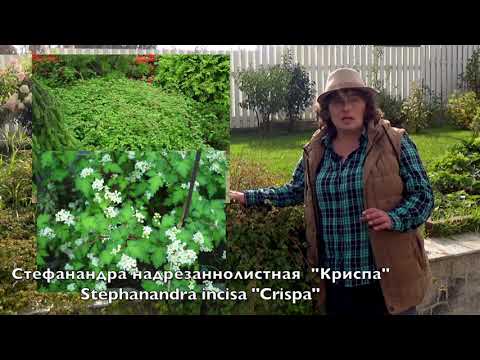

Watch this video on YouTube
Reproduction methods
Stefanandra grown in the garden is propagated in several ways: by seed, cuttings and layering.
Growing from seeds
The seeds of this shrub can be purchased at a flower shop. Sowing seeds is carried out directly into open ground, and they do it in May. After the seedlings appear, they may require thinning. And when they grow up a little and get stronger, they can be transplanted to a permanent place. Note that Stephanander's seed is not stratified.
Cuttings
This plant is also propagated by cuttings. To do this, you need:
- find annual or biennial shoots on the bush and cut them off;
- immerse the lower parts of the cuttings in a solution of a product that stimulates root growth, pull them out after 6-7 hours;
- for rooting, plant the segments in pots filled with earth mixture, while they are buried only 30 mm;
- water the planted segments and cover them on top with a transparent cap, for example, a film;
- do not forget to systematically air the cuttings, and also make sure that the soil mixture in the container is constantly slightly damp.
Sections' own roots grow rather quickly. However, they will be transplanted to a permanent place in the garden only after 1 year.
Reproduction by layering
In order to get the stefanandra cuttings, a suitable one-year-old stem is selected first. In the area where the shoot will come into contact with the ground, it should be slightly cut. Bend the stem to the surface of the soil and lay it in a shallow, small ditch, which is made in advance. Fix the shoot in this position with a metal clip, after which it is covered with a layer of soil and watering is carried out. The top of the layer should not be covered with soil. If everything is done correctly, then after a while the stem will form its own roots. When this happens, the cuttings are cut from the parent bush and planted in a permanent place.
Stefanandra varieties with photos
In nature, there are 4 types of stefanandra. However, in the gardens of middle latitudes, only 2 of them are cultivated: Stephanandra notched-leaved and Tanaki.
Notched-leaved stephanandra (stephanandra incisa)
This slow-growing plant is maximum in diameter and reaches a height of about 200 cm. In order for a shrub to grow to this size, it takes from 25 to 30 years. All summer and throughout September, it retains its decorative effect. Lush bloom begins in June and ends in August. But in September, the bush is decorated with bright foliage. In winter, those parts of the plant that are not covered with snow are damaged by frost and die off. However, with the onset of spring, the plant quickly recovers, but throughout the next season it may not bloom.
As a result of breeding work, a dwarf subspecies was born, which is called Crispa. The height of such a plant is only about 0.6 m, and in diameter it reaches about 200 cm.This bush looks extremely impressive and unusual in the garden area, like a small pillow consisting of foliage. Such a shrub grows many shoots, which eventually tend to the soil surface.They often take root, due to which the bush grows in breadth.
Stephanandra Tanaki, or tanake (stephanandra tanakae)
This species, in contrast to the rest, is relatively vigorous: in height it can reach about 200 cm, and in diameter - up to 400 cm.The length of large foliage can reach up to 100 mm, and its lush inflorescences also reach about 100 mm in diameter. The flowering of this plant does not last as long compared to other species. It begins in July and ends in late summer or early autumn. With the onset of the autumn period, the bush does not lose its showiness. At this time, its foliage is painted in various bright shades: burgundy red, yellow and brown. The frost resistance of this shrub is low. To keep the bush until spring, it must be sprinkled and wrapped.
Stefanandra in landscape design
The Stephanander shrub looks spectacular in the garden both in summer and autumn. But the bush looks most advantageous against the background of conifers with a dark green crown. This shrub can be used to create a hedge. The dwarf stefanandra is used as a ground cover plant.
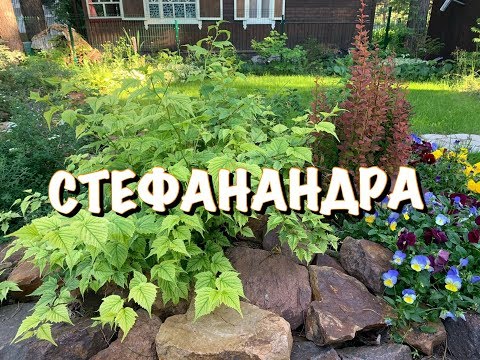

Watch this video on YouTube

